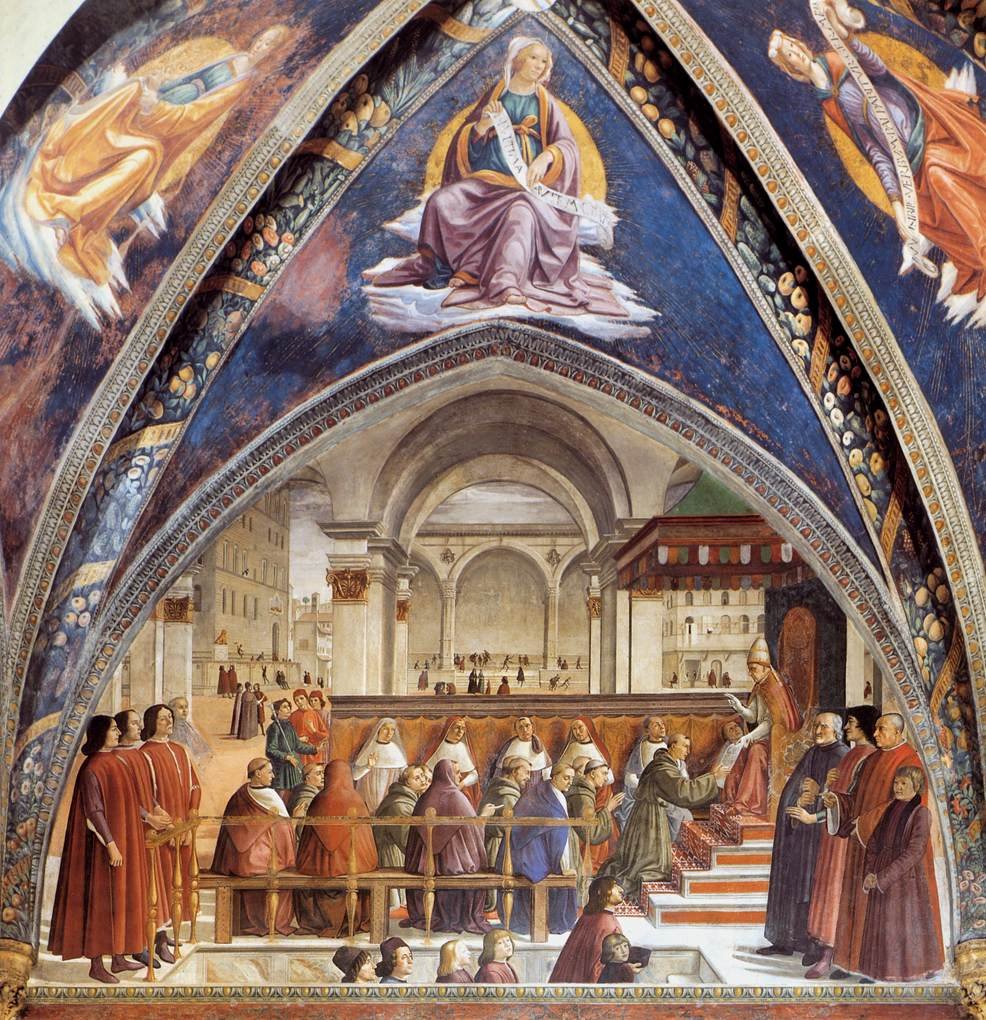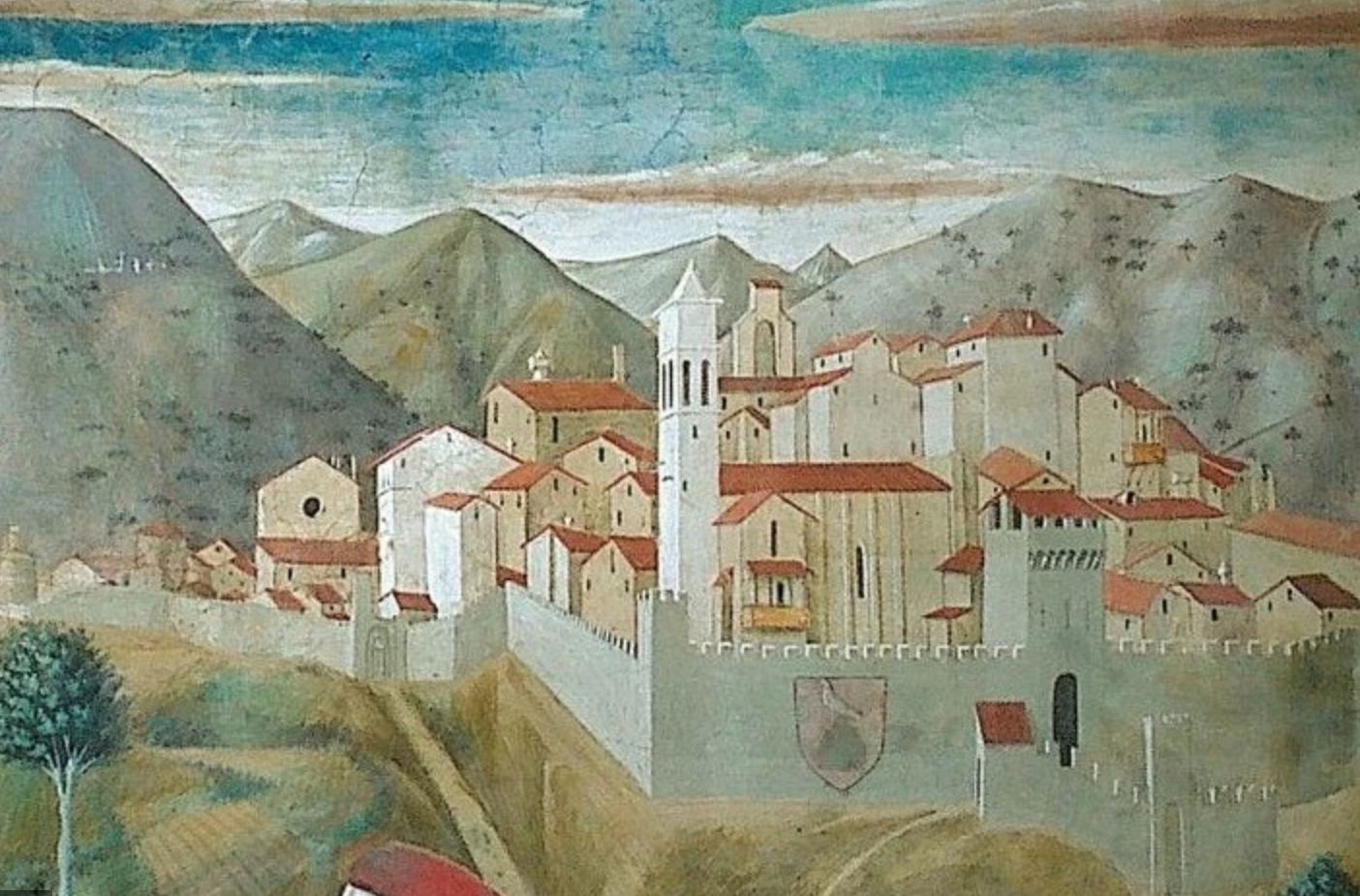
Magnificence
Loggias and Benches in Florence. Magnificence between public and private interests during the Renaissance.
This research was presented at the 67th annual meeting of the Renaissance Society of America, in the panel Architecture for the common good. This research was developed with the economic support of the PhD Scholarship of the Fundação para a Ciência e a Tecnologia (FCT).
During the Renaissance, loggias and street benches spread, especially in Florence, characterized the public space. The street benches are seats that define the lower part of many buildings in the city center. These benches were both a gift to the city by the owners of the buildings and a device to accommodate visitors while they waited to be received. This morphological element, reminiscent of the crepidoma, is present in many Renaissance palaces, such as in Palazzo Strozzi, Palazzo Medici Riccardi and Palazzo Salimbeni. The mixture of public service and commercial interest is also one of the main characteristics of the first examples of loggia, as in the Loggia del Porcellino and the Loggia del Pesce.
The functions of the lodges were multiple and underwent a rapid evolution. The Loggia degli Innocenti was used to welcome the users of the Orphanage. The Loggia de 'Lanzi in the sixteenth century became one of the first outdoor exhibition spaces in the world. This text aims to deepen, through the study of the loggias and street benches, the application of the concept of Magnificence in the architecture of the Renaissance in Florence.
Introduction
The concept of Magnificence has its roots in classical antiquity, and then flourishes during the Renaissance. In the Florence of the time this concept not only indicated a virtue, but was also used in common language to enhance the qualities of the protagonists of public life, with the nickname "Magnifici". «Anticamente, scrivendosi a' Conservadori, Anziani, Priori, ò altri Magistrati di Città ordinarie, venivan trattati col Titolo di Magnifici...»("In ancient times, 'Conservadori, Anziani, Priori, or other Magistrates of ordinary cities, they were treated with the title of Magnificent ...") Magnificenza is a word composed starting from the verb "fare", "facere" in Latin, from which the addition of the word "magnus" generates the virtue of doing great things.
In the Florentine Renaissance this concept, to paraphrase Deleuze2, is used as an operational tool, both in the political management and in the material construction of the city.
The loggia and the street bench, whose benefits we can still enjoy today, are two of the many architectural features derived from the adoption of this concept. In the following text we will try to highlight how Magnificenza has shaped the city of Florence, through the relationship between private and the public space.
The Ideal City
The Renaissance is the moment in which three paintings are produced called today with the same name, "The Ideal City": fantastic views in a central perspective from the point of view of "homo novus". These paintings represent what a city should be, drawn on a grid and with monuments considered exemplary at the time, such as the Florence Baptistery and the Colosseum. They reflect the desire to represent and give shape not only to a city but also to a society.
The transition from City-State to Municipal Lordship (Signoria), that is the shift of the power of the city from the Emperor and the great feudal lords to its inhabitants, induced great changes. In this context of centralization of power, between 1200 and 1300, the needs of each city evolve, entering into direct competition with each other, as centers of exchange and market. Throughout Italy there are a series of innovations regarding the urban environment, which aim at what today would be called beautification, in order to improve the experience of visitors / traders / customers3. In this way we proceed to the demolition of the illegal encumbrances built by the inhabitants in the streets, an operation also documented in the representations of the cities themselves, as can be observed in the work of Benozzo Gozzoli, in which the buildings stand out as pure volumes. The affirmation of the families of merchants and bankers leads to the possibility of acquiring large portions of land in the city walls, leading to the diffusion of the Palazzo typology as an evolution of the medieval equivalent of the Casatorre. At the same time, the enrichment and independence of individual cities allow for investments in urban spaces and contribute to architectural innovations that can respond to the changing needs. In this context, the typology of the Tuscan civic loggia4 and the formal innovation of the street bench spread.
The Loggia
The adjectives "civic" and "Tuscan" are used as the morphology and the functions that the lodges performed in Tuscany from the fourteenth century to at least the seventeenth, have particularities that are not found either geographically or temporally in other areas. Nonetheless, the etymological and morphological origins of the Lodge can be found in the "laubiae", a Germanic term that indicated pergolas, that is, covered but open spaces. In northern Italy in the Carolingian Age, these spaces, often obtained inside pre-existing buildings, were used to carry out judicial functions5. The Greek and Roman architecture have open but covered spaces linked to the performance of public functions, however their architectural correspondence with the Renaissance loggias is limited. The definition of the word lodge, in fact, appears consistently starting from the fourteenth century. The main morphological innovations are the rise as a building isolated and independent from other buildings, the oversizing aimed at making them symbolic buildings and the conformation designed both to host functions inside and to be a stage that can be enjoyed by the spectators outside.
The functions they could accommodate were many: they served as a place for public announcements and judicial acts6, as a ceremonial stage, but they could also house the troops in times of crisis. They were celebratory monuments but also play spaces for free time.
They were spaces that today we would define multifunctional and that assumed a high representative power being often located in the square facing the seat of the government. Moreover, due to the fact that they were managed by the municipal government, they were also configured as a place where «Tutti i partiti che s'avevano a pigliare coll'altre potenze, o di guerre o di paci, erano per le piazze e ne' cerchi de' cittadini e nelle logge, che in questi tempi qualche poco ancora si frequentavano, ed alle panche biasimate»7. («All the parties that had to take with other powers, or wars or peace, were for the squares and in the circles of 'citizens and in the lodges, which in these times a few still frequented each other, and at the benches blamed»).
The Panca Di Via
The panca di via (street-bench) is configured as a crepidoma of the building, the top of which, in terms of height and depth, is like a bench. It is in fact in the palaces that this element is born, although it also appears in religious buildings, such as at the base of the Duomo of Florence, and in public buildings. The formal evolution of this element is varied, it was born as a volume full of stone that protected the base of the building from the passage of carriages, it evolves with the introduction of a step to rest the feet avoiding the road, since there were no sidewalks. It connects with the entrance stairs to the building and finally functions as a shelter and crowning for the bocche di lupo (wolf's mouths), ie the windows that illuminated the basement. We must bear in mind that in the fifteenth century the number of benches, as the number of the loggias, was much greater than what has been left to us. Designed to keep the guests of the families of the palaces waiting, these benches became something more than simple seats, real devices for activating the public space, meeting points, catalysts of relationships and social phenomena, from conspiracies to ceremonies8. On the threshold between the private and public spaces, these benches created spaces for sharing, common spaces.
Piazza della Signoria, the civic center of the city of Florence, became the most advanced manifestation of this complex series of typological and cultural innovations. With the construction of the Loggia dei Lanzi, the construction of the ringhiera (railing) at the foot of the Town Hall and with the construction of a panca di via (street-bench) on the opposite side of the square, demolished in 1871, the civic square was shaped like a council chamber, an agora, surrounded on three sides by terraced bleachers that offered a place for all social classes, to take part in the most significant events in the city or even just to spend free time. The decorations of the Loggia de' Lanzi are also aimed at inspiring public life, as shown by the four panels aligned with the pillars, representing the four cardinal virtues of wisdom, justice, temperance and strength.
The Tuscan civic loggia, perhaps the most representative typology of the Florentine Renaissance, brings to mind the words of Moneo: «The most intense moments in architectural [and cultural] development are those when a new type appears».
Conclusions
The forms of government of the Republic and Signoria, in which the great families together with the government, extended their wealth to the city, led to a radical physical and conceptual transformation of public space. A collective will to make cities prosper, by creating a unique and "ideal" image of the city of the late Middle Ages, has contributed to the idea of the city as common good.
Great architects such as Brunelleschi, Alberti, Vasari and many others are called upon to create the palaces of the great families and public buildings, extending their influence to the surrounding urban spaces. As Yvonne Elet10 points out, most of the public and private buildings, loggias and street benches, were the work of the Medici family, whose main protagonist Lorenzo, although never having been elected Gonfaloniere or Priore, is still remembered today as "the Magnificent". The development of the Magnificence in the city, understood as a common good, was not only a calculated product, but was also the result of taking risks, such as building a cathedral that no one was able to crown with a dome for over a hundred years. On the other hand, as D'aquino wrote «la magnificenza ha a che fare con la fortezza [forza n.d.r.] perché, come la forza, così anche la Magnificenza tende a qualche cosa di arduo e di difficile»(«Magnificence has to do with fortitude [strength ed.] Because, like strength, so too Magnificence tends to something arduous and difficult»).






